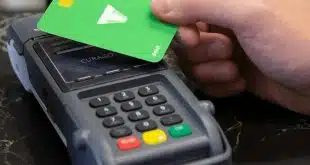Key payment trends now being driven by the Covid-19 pandemic were already gaining a full head of steam much earlier, according to debit card transaction data released early Monday by the Houston-based Pulse electronic funds transfer network.
Stay-at-home policies and business closings starting in March drove consumers to spend online and to turn to options like curbside pickup and meal delivery, some for the first time. But card-not-present transactions on debit networks had already grown fully 21% in 2019 over 2018, reaching 6.3 transactions per active card, according to the network’s 15th annual Debit Issuer Study, which looked at numbers from a variety of major EFT networks in addition to Pulse. That growth rate was 10 times greater than the rate for card-present transactions. Indeed, card-not-present transactions accounted for 27% of all transactions last year, up from 13% five years ago.
Simultaneously, the average ticket on card-present transactions fell for the first time in the study’s history, to $34.10 from $34.49 in 2018. Overall, with card-not-present transactions accounted for, the average ticket grew nearly 2% to $40.50.
Many consumers eschewed cash when the outbreak grew widespread, fearing infection. But more debit card holders were already ditching folding money in 2019, as cash withdrawals dropped nearly 6% to 1.5 withdrawals per card.

“We’re seeing fewer and fewer cash withdrawals,” says Steve Sievert, executive vice president of marketing and brand management at Pulse, a unit of Discover Financial Services. Sievert supervised the study, which relied on research by Oliver Wyman, a New York City-based management-consulting firm. At the same time cash withdrawals were dipping, monthly debit card transactions last year reached an all-time high at 25.5, up from 24.8 in 2018.
One trend that may have lagged earlier and is now getting a kickstart by Covid-19 is contactless plastic, now preferred by consumers wary of touching keypads in stores. While some 29% of Pulse’s issuers offered contactless debit cards last year, fully two-thirds expect to do so by year’s end. Only 9% say they have no plans to put out contactless cards.
By the same token, digital wallets are also getting a lift, though Apple Inc.’s Apple Pay is driving ahead of rivals Samsung Pay and Google Pay. Nearly all issuers now enable their debit cards to be enrolled for Apple Pay, while 17.5% of cards are enrolled in the service. The percentages for Samsung Pay and Google Pay, by contrast, are 1.7% and 1.2%. Some 40% of enrolled cards use Apple Pay at least once a year, compared to 23% and 22% for the other two services. Apple Pay is “far and away the wallet leader in debit,” says Sievert. Still, mobile accounted for just 2% of all transactions last year, though that percentage doubled from 2018.
All told, account-to-account money transfers for functions like peer-to-peer payments, payments to ride-share drivers, and digital wallet transactions grew 97% last year, reaching 0.6 transactions per active card. “A2A is the fastest-growing category of debit volume,” says Sievert.
Debit interchange income for issuers, a topic the Pulse study looked at for the first time with this year’s study, accounted for about 6% of all issuers’ non-interest fee income in 2019. But it was fully one-quarter of this fee income for so-called exempt issuers, the institutions exempted from interchange caps mandated by the Durbin Amendment to the Dodd-Frank Act for issuers with $10 billion or more in assets.
“Community banks and credit unions continue to see significant contributions to non-interest income from debit,” says Sievert.





